Although it bears the name of the Roman god of agriculture, Saturn isn’t a planet you’d be able to grow anything on. In fact, it doesn’t even have a solid surface! Rather, it’s a gas giant with a swirling atmosphere and hostile conditions. It’s most famous for its prominent rings, which are the most visible and complex in the solar system. But can they be seen from Earth? Just how far away is Saturn from the other celestial bodies in our solar system? Find out this and much more below!
How Far Away Is Saturn?
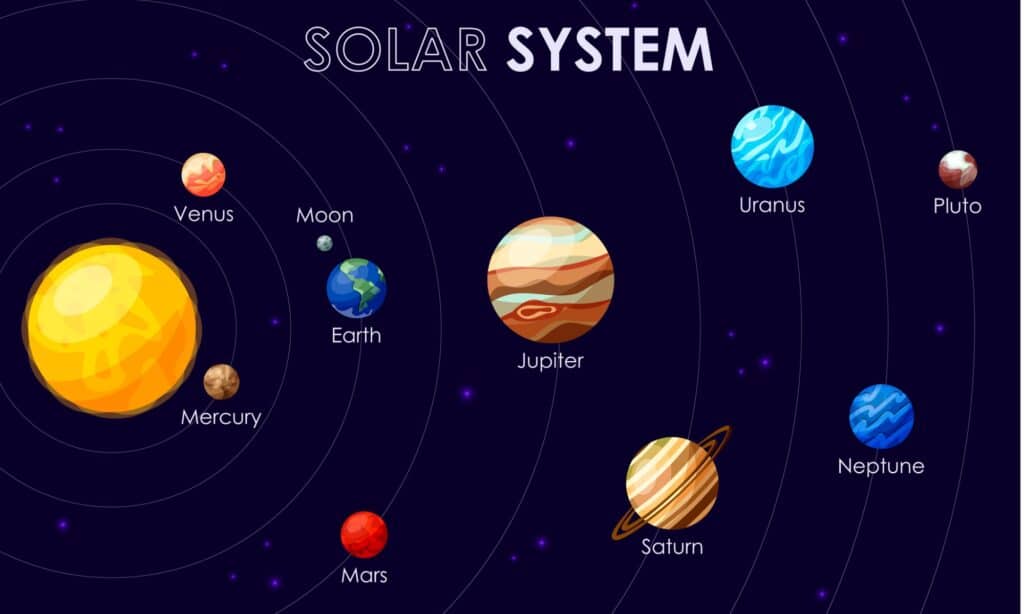
Saturn is the 6th planet from the Sun and the 2nd of the gas giants.
©iStock.com/Alexander Timoshin
Saturn lies an average of 792 million miles from Earth and 886 million miles from the Sun. It’s the sixth planet from our star between Jupiter and Uranus. It’s also one of the four Jovian planets, which include the gas giants Jupiter, Uranus, and Neptune. Like all the planets in our system, it has an elliptical orbit, meaning the distance between it and other celestial bodies changes constantly.
Besides miles and kilometers, astronomers also use light years and astronomical units to measure distance. A light year expresses the distance light can travel in one Earth year. An astronomical unit (AU) is the distance between the Earth and the Sun, about 93 million miles.
Distance From Saturn to the Sun: 886 Million Miles
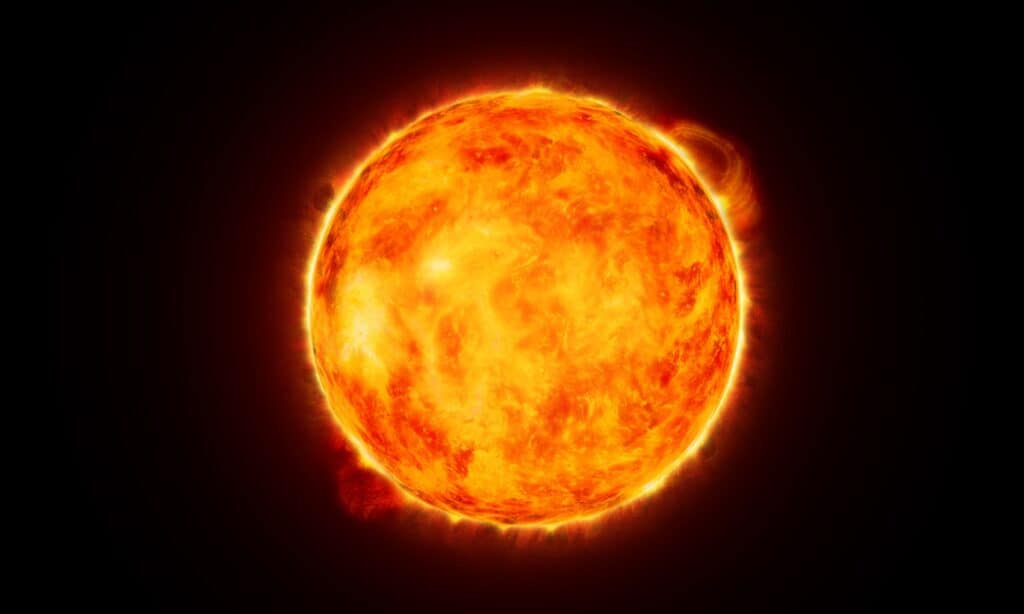
The average distance from Saturn to the Sun is 886 million miles.
©iStock.com/hadzi3
The average distance from Saturn to the Sun is 886 million miles or 9.5 AUs. At its aphelion (furthest point from the Sun), it stands 934 million miles away; at its perihelion (closest point to the Sun), it lies 839 million away. Expressed another way, it lies 0.0001505453985955772 light years from the Sun.
Saturn is the second largest planet in our solar system, but even so, it would take 1,700 copies of it to fill our star. Because the planet is so far away, the Sun only appears about 1/100th as bright from its surface as it does on Earth.
Distance From Saturn to Earth: 792 Million Miles
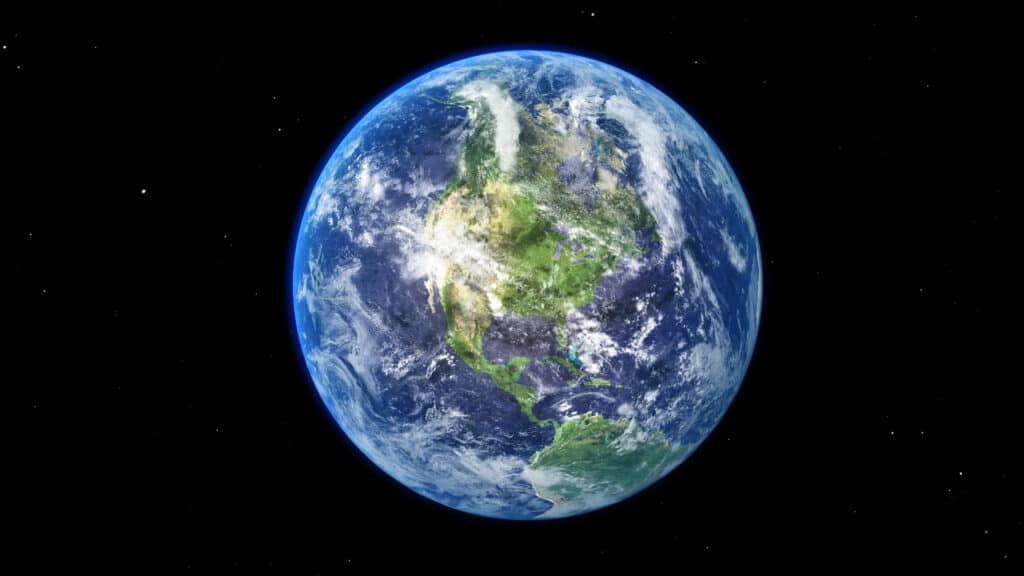
The average distance from Saturn to Earth is 792 million miles.
©iStock.com/Thaweesak Saengngoen
The average distance from Saturn to Earth is 792 million miles or 8.52 AUs. At its closest point, 1.74 billion miles separate our planets, while at its furthest point, that number falls to 746 million miles. Saturn is 9 times wider than Earth, boasting a radius of 36,183.7 miles. The difference between the planets’ masses is even greater: Saturn has 95 times the mass of Earth. Despite its enormous size, Saturn is the only planet in the solar system less dense than water. This means that if it were thrown into a giant pool, it would float!
Distance From Saturn to Mercury: 849 Million Miles

The average distance from Saturn to Mercury is 849 million miles.
©iStock.com/FlashMyPixel
The average distance from Saturn to Mercury is 849 million miles or 9.14 AUs. Mercury is the smallest planet in the solar system, with a radius of only 1,516 miles; this makes Saturn’s radius almost 24 times larger. Mercury is also closest to the Sun and has no moons, while the gas giant has 53 confirmed moons. The largest of these is Titan, and it’s bigger than Mercury! In fact, it’s the second largest moon in the solar system, outranked only by Jupiter’s biggest moon Ganymede.
Distance From Saturn to Venus: 818 Million Miles
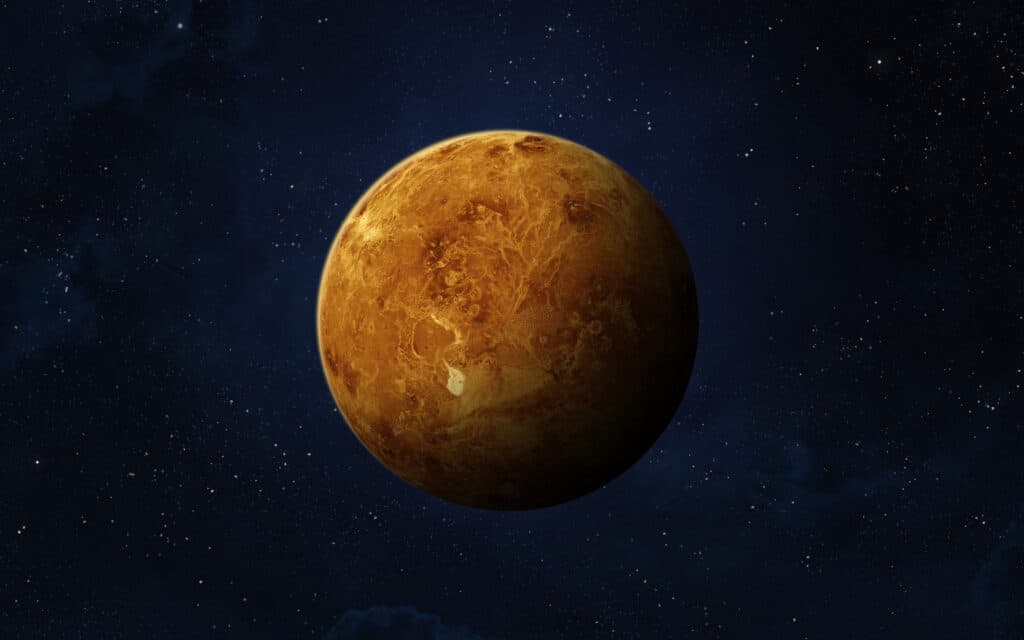
The average distance from Saturn to Venus is 818 million miles.
©iStock.com/buradaki
The average distance from Saturn to Venus is 818 million miles or 8.8 AUs. Much like Mercury, Venus also has no moons and has an extremely hot climate. In fact, Venus is the hottest planet in the solar system, with temperatures as high as 872°F (467°C). By contrast, Saturn is extremely cold, with temperatures dipping as low as -285°F (-176°C). Both planets are yellowish, though Venus is much brighter with a white tint.
Distance From Saturn to Mars: 744 Million Miles
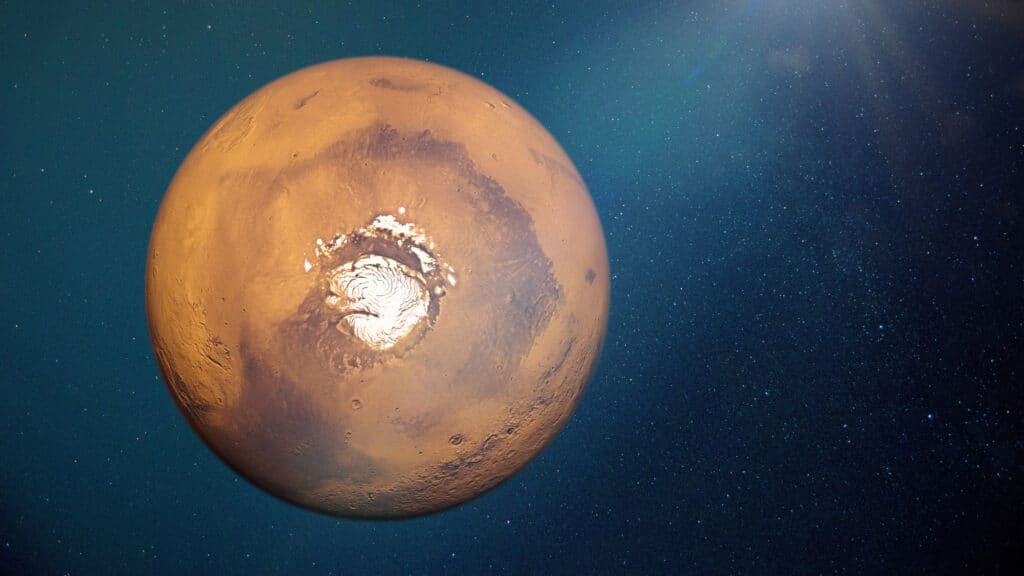
The average distance from Saturn to Mars is 744 million miles.
©iStock.com/dottedhippo
The average distance from Saturn to Mars is 744 million miles or 7.99 AUs. Mars is one of the brightest natural objects in the night sky, trailing behind the Moon, Venus, and Jupiter. It appears reddish due to the iron minerals in its soil. In contrast to Saturn, it has an extremely thin atmosphere. Being a terrestrial planet, Mars has a solid surface, though nothing grows or lives there.
Distance From Saturn to Jupiter: 402 Million Miles
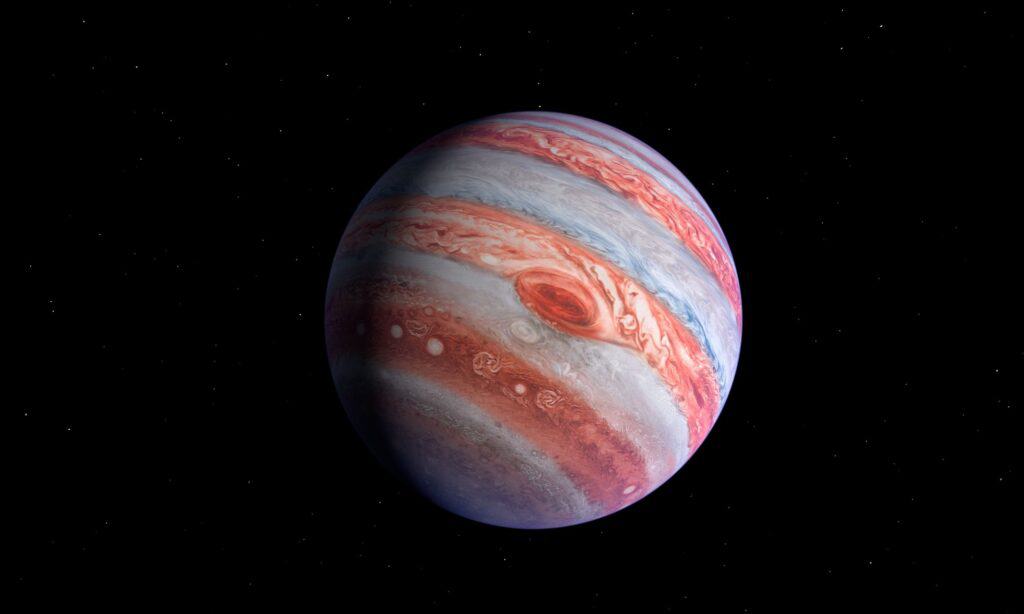
The average distance from Saturn to Jupiter is 402 million miles.
©joshimerbin/Shutterstock.com
The average distance from Saturn to Jupiter is 402 million miles or 4.32 AUs. Scientists believe that both these planets have a solid core, though Jupiter‘s is larger, about the size of Earth. Saturn’s core lies within a layer of liquid metallic hydrogen topped by a layer of liquid hydrogen; a vast atmosphere of hydrogen and helium covers both. Neither planet has a landmass.
Distance From Saturn to Uranus: 900 Million Miles

The average distance from Saturn to Uranus is 900 million miles.
©iStock.com/IncrediVFX
The average distance from Saturn to Uranus is 900 million miles or 9.7 AUs. Uranus is unique among the planets for the extreme 98° tilt of its axis, which puts it almost on its “side” relative to the Sun. This contrasts with the more moderate 23.5° tilt of Earth’s axis. Saturn is similar to Earth in this respect, with a tilt of 26.7°. This angle enables the planet to experience seasons.
Distance From Saturn to Neptune: 1.91 Billion Miles

The average distance from Saturn to Neptune is 1.91 billion miles.
©iStock.com/3quarks
The average distance from Saturn to Neptune is 1.91 billion miles or 20.57 AUs. Neptune has the longest year of any planet in the solar system, lasting 165 Earth years. By contrast, the Saturnian year is 29.4 Earth years. Its day is the shortest of all the planets, lasting only 10.7 hours.
How Long Does It Take to Travel to Saturn From Earth?
Spacecraft have traveled from Earth to Saturn in as little as 3 years and 2 months. NASA’s Pioneer 11 spacecraft accomplished this feat during its flyby in September 1979. It was the first spacecraft to visit the planet. Four spacecraft have visited the planet so far.
The most recent spacecraft, NASA’s Cassini, took 6 years and 9 months to arrive on July 1, 2004. It orbited the planet for over a decade, plunging into its atmosphere when its fuel ran out for a final series of measurements and photographs. The difference in travel time is mainly to do with the chosen route.
Is Saturn Visible From Earth?
Saturn is one of the 5 brightest planets in our solar system and is typically visible from Earth to the naked eye. Binoculars or telescopes will greatly improve the viewing experience.
The planet’s 7 rings are visible only with the aid of a telescope. Check out this guide for viewing tips. These rings vary in brightness and density. They are made up of particles, some grain-sized, some as large as houses or even mountains. The ring system reaches as far as 175,000 miles from the planet, with a maximum ring height of about 30 feet.
Has Anyone Ever Set Foot On Saturn?

No human or spacecraft has ever landed on Saturn.
©iStock.com/buradaki
No human or spacecraft has ever landed on Saturn. This is mainly because there’s nowhere to land or stand. The planet is essentially blanketed by a vast hydrogen ocean, but its atmosphere is equally forbidding. Spacecraft would not be able to pass through unscathed due to the enormous pressures and other adverse conditions.
However, the Huygens probe from NASA’s Cassini spacecraft landed on the largest moon, Titan, on January 14, 2005. This marked the first time a probe had made a landing in the outer solar system. Titan contains water below its surface, making it one of the most viable heavenly bodies for future exploration and possibly the presence of lifeforms.
Saturnian Climate and Lifeforms
Scientists have not discovered any lifeforms on Saturn, nor is human habitation possible. Its temperatures and winds are fierce, though not to the extent of a planet like Neptune. The Saturnian moons are scientists’ best bet for discovering life.
Though Saturn may be barren of all life, it remains an astronomical wonder, punctuating our brilliant night skies with its mysterious light.
Check out this article on “How Much You’d Weigh On Saturn.”
The photo featured at the top of this post is © iStock.com/forplayday
Thank you for reading! Have some feedback for us? Contact the AZ Animals editorial team.






